How To Record Podcast On Windows
To record a podcast, you'll need a microphone, PC or tablet, sound editing software. Plug your microphone into your calculator (or tablet) and record your episode. Once you're washed editing it, you'll export the MP3, and upload it to a podcast hosting provider (similar Transistor.fm). Your podcast host will assistance you lot distribute your podcast to Apple tree Podcasts, Spotify, and other listening apps.
Five steps for creating a podcast in 2022:
-
Podcast recording equipment – get a cracking podcasting mic starting at $60.
-
Cull your audio editing software – employ audio editing software to record and edit your episodes.
-
Publish your podcast – upload your audio to your podcast hosting provider.
-
Submit to Apple Podcasts and Spotify – submit your podcast's RSS feed URL to appear in their directory.
-
Promote your podcast – to get more than listeners, employ search engines, social media, and word of mouth.
Nosotros also have a section for oftentimes asked questions at the lesser.
What equipment do you need for a podcast?
To starting time podcasting you'll simply demand a USB microphone, a pop filter, headphones, and a calculator.
More advanced users may want to buy an XLR microphone, sound interface, mixer, and a microphone stand.
Podcast equipment packages
Starter podcast kit – $89
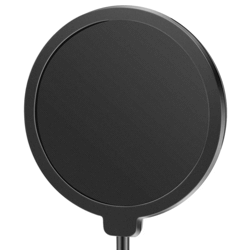
Pop filter – $10-$15
Neewer – windscreen for your microphone. Amazon | Walmart
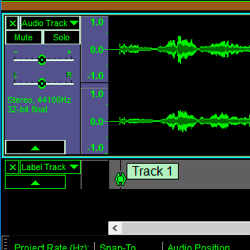
Semi-pro podcast kit – $349
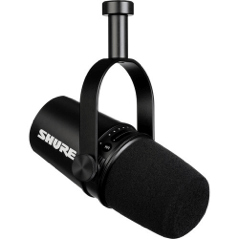
Microphone - $249
Shure MV7 – dynamic mic with both USB and XLR. Amazon | B&H
![]()
Microphone boom arm – $100
Blue Compass – mount your mic to your desk. Amazon | B&H

Professional podcast kit – $i,398
![]()
Microphone - $400
Shure SM7B – XLR cardioid dynamic microphone. Amazon | B&H
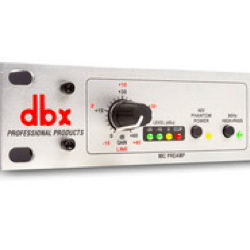
Preamplifier – $219
DBX 286s – vocalization processing and noise removal. Amazon | B&H
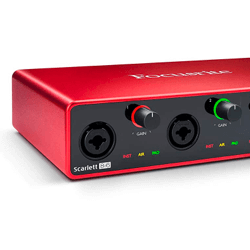
Audio interface – $399
Scarlett 18i8 – USB interface for your mic. Amazon | B&H
![]()
Microphone nail arm – $100
Bluish Compass – mount your mic to your desk. Amazon | B&H
![]()
Best podcasting microphones
Many folks use the Blue Yeti USB microphone, but nosotros don't recommend it. This condenser microphone picks up a lot of room noises (especially any thumps or bumps you make while recording).
Here are some better microphone options (from least expensive, to most plush):
-
Samson Technologies Q2U ($60 USD) – this dynamic microphone can plug into your computer via USB or you tin can use an XLR cablevision.
-
Audio-Technica ATR2005-USB ($79 USD) – another dynamic microphone with USB and XLR inputs. A keen option if the Samson Q2U is sold out.
-
Audio-Technica ATR2100x-USB ($99 USD) – this is the newer version of the much-loved ATR2100 mic. It has both USB and XLR inputs.
-
New: Shure MV7 ($249 USD) – inspired past their SM7B, Shure created the MV7 specifically for podcasters. It's a pro-level dynamic mic, but (unlike the SM7B) has both USB and XLR outputs.
-
Shure SM7B ($399 USD) – consistently ranked as one of the best podcast microphones by professionals. You'll besides need a USB interface for this mic.
-
Heil PR forty ($399 USD) – another classic microphone for voiceover piece of work, also highly rated. (An boosted USB interface/preamp is as well required).
All-time podcasting preamps and USB sound interfaces
If you lot're using an XLR microphone, you'll need to connect it to your computer via a USB interface. Almost of these accept 2 (or more) inputs, which will permit you to record multiple microphones at the same time.
-
BEHRINGER UMC202HD ($99 USD) – I've been using this little preamp + USB interface for the past yr, and really like it. It's the well-nigh affordable USB interface I've found and is comparable in quality to the Scarlett (beneath).
-
Focusrite Scarlett 2i2 ($160 USD) – used by thousands of podcasters, the Scarlett is a popular USB interface.
-
DBX 286S Preamplifier ($219 USD) – my friends Sean McCabe and Matt Giovanisci swear by this preamp. Matt says: "I don't need a lot of soundproofing in my room with the DBX. It has a very effective gate that cuts the room noise out." Sean recommends setting the DBX input proceeds at 50–55, and output gain at 0–5db. "To be articulate," he says, "yous still demand an audio interface with the DBX 286s. It'due south a pre-amp, not an interface. You lot can't connect it to your reckoner without something similar the Scarlett."
How to record and edit your podcast
Now that you have your microphone plugged into your reckoner, you'll employ audio editing software to record and edit your podcast episodes.
How to record a podcast with remote guests
-
Descript (Web) – a unique way to record and edit your podcast. Descript automatically transcribes your spoken word and allows you lot to edit sound by editing the text transcription.
-
Garageband (Free, Mac) – If you have a Mac, this is the easiest way to beginning recording and editing your podcast.
-
Audacity (Free, PC) – for PC users, Audacity is a adept free choice for recording and editing podcasts. Emily Prokop has a good video tutorial on using Audacity.
-
ScreenFlow ($99 USD, Mac) – this is technically video editing software, just I've been using it lately for quick podcast editing projects. It works really well for recording sound equally well.
-
Alitu (Spider web) – with Alitu, you upload all of the clips for your episode and it cleans them up, adds intro music, and exports a finished sound file.
How to publish your podcast audio
Once you've created your audio, it's time to upload it to a hosting provider and generate your podcast feed. Every podcast needs:
-
A webserver to host MP3 files,
-
A way to create new episodes, and add show notes,
-
A fashion to publish new episodes, and update the podcast's RSS feed,
-
And a way to generate a valid RSS feed.
This is where a podcast hosting company comes in.
All-time podcast hosting and analytics platform
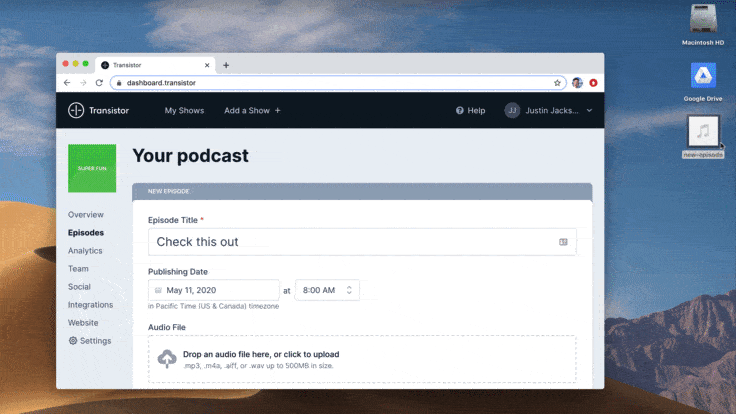
-
Transistor ($19 / month) – we started Transistor for professionals who are serious virtually their podcast. We provide a website for your podcast, a place to store your MP3 files, an iTunes-ready RSS feed, and detailed analytics.
-
Ballast (free) – if you lot're starting a hobby podcast, Ballast is a nice way to get started.
-
Soundcloud (free) – is another popular place for folks looking for a free hosting solution.
How to get your podcast on Apple Podcasts, Spotify, Google
Your hosting provider should requite you a valid RSS feed for your podcast.
Now, you can submit that RSS feed to different podcast players (like Apple Podcasts, iTunes, Spotify, Google Podcasts) so that listeners can hands find your show, and play your sound.
Podcast distribution works similar this:
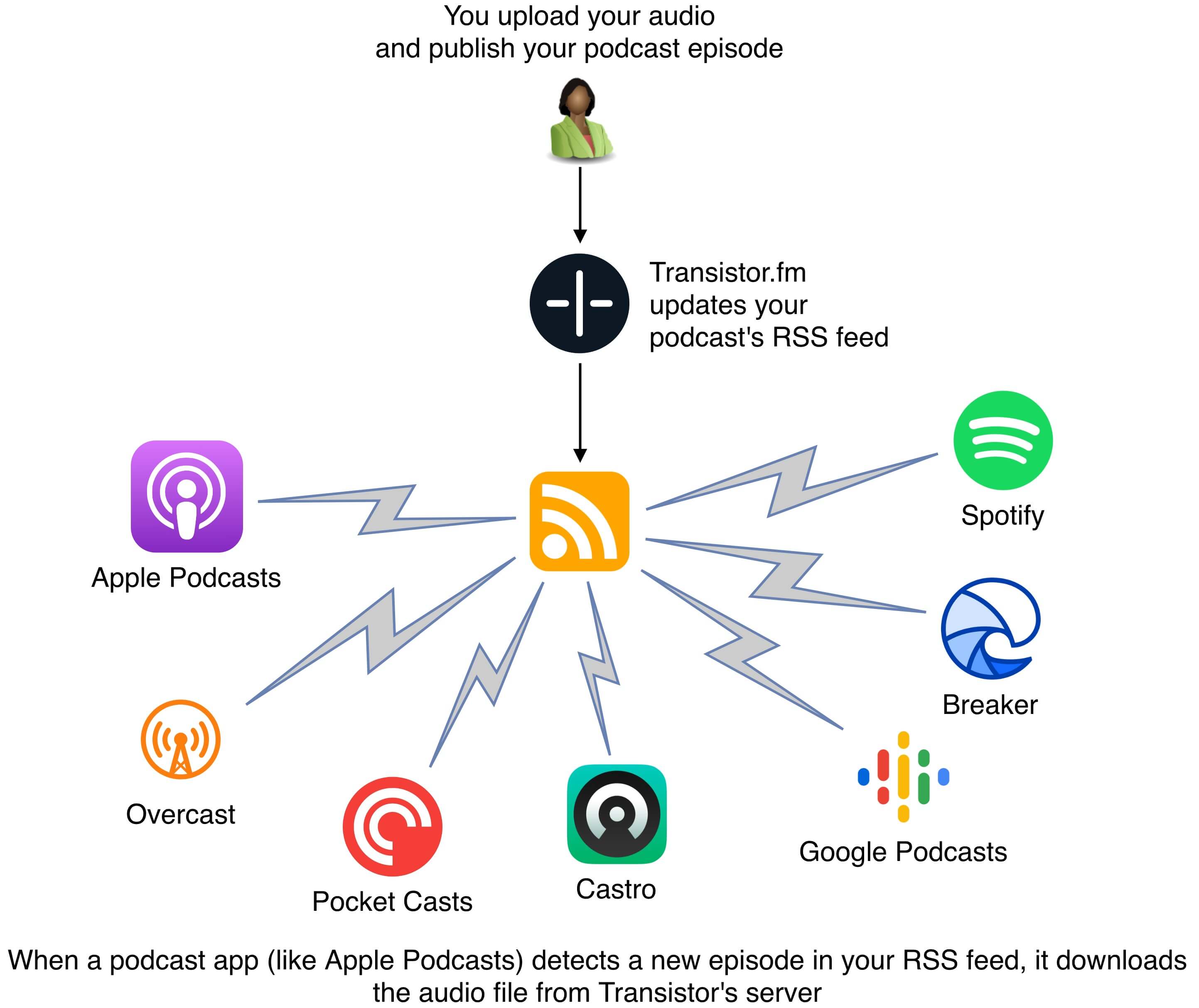
For more information on how podcast distribution works, read this guide.
Most popular podcast listening apps
Make sure you submit your RSS feed to these podcast players. (I recommend submitting in this lodge)
-
Apple tree Podcasts (iTunes) – nearly every podcast directory (Podchaser, Overcast, Pocket Casts, Breaker, Castro, Listen Notes ) uses Apple tree'south directory as their "primary copy." If your evidence is on Apple Podcasts, it volition automatically show upwards on most of the other directories.
-
Spotify – Spotify has quickly get a major player in the podcast infinite. Notation: they re-host your audio files and testify notes on their server.
-
Google Podcasts – Google at present has a built-in podcast histrion on Android. There's nowhere to "submit" your show, nonetheless. Instead, you'll demand to take a website for your podcast with a <link> element that points to your RSS feed. (Transistor websites do this automatically)
-
Pocket Casts – Pocket Casts is a popular histrion, now owned past WNYC, NPR, WBEZ and This American Life.
-
Stitcher – Stitcher used to exist a popular player, but isn't as important these days. Like Spotify, they re-host your audio (which some folks don't like).
Like I mentioned, apps like Overcast and Castbox scrape the Apple Podcasts directory, and so if you submit first to Apple, you'll eventually show upwards there too.
How to promote your podcast
The foundation has been prepare! You have recording equipment, you've uploaded your commencement episodes, you've submitted your feed to various players; at present you'll want listeners.
Co-ordinate to Edison Research (2019), here are the summit three means listeners discover podcasts:
-
Searching the Internet (73%)
-
Social media posts (67%)
-
Recommendations from Friends/Family (66%)
To succeed with podcast promotion, y'all'll want to target those channels!
Best ways to market your podcast
Marketing a podcast is a big topic, just hither are some quick tips:
-
Build anticipation before you launch – ane big opportunity many folks miss is building upwardly apprehension before they launch. Create a "coming before long" web page for your evidence, and get folks to sign up for a waiting list. Ship out teasers and samples, and create momentum for your official launch mean solar day.
-
Use keywords to your advantage – when folks look for the best podcasts most farming, they search "best farming podcasts." If your podcast is called "The Farming Podcast," you're more probable to go found, as opposed to calling your show: "Steve Smith – the modern agrarian."
-
Start an email newsletter – one of our customers, Josh, sent an email to his list about his podcast and did 3x the listens in i solar day. For my show, I use MailChimp to transport out an automated email every time we publish a new evidence (here'due south how).
-
Cross-promote on like podcasts – notice influential shows that have a like audience to y'all, reach out and inquire if they're interested in some sort of cross-promotion. Sometimes, this means doing an episode commutation (you post one of their sample episodes in your feed, and they do the same for you lot).
-
Engage in communities where your audience hangs out – don't spam, just edifice up a reputation Facebook Groups, on forums, and in comments, threads is a good strategy. Then, when appropriate, link out to specific shows (but simply if they're related to the current topic of conversation!).
-
Create a video teaser – create a video teaser for your latest episode using Headliner, and post it Twitter, Facebook, LinkedIn, and YouTube. (Hither's a skilful instance).
-
Utilize direct post – send your fans stickers, postcards, or a letter of the alphabet the old-fashioned way. Trust me, they'll tell people about it!
-
Go to events – spread the word in-person. Go to tradeshows, conferences, and meetups that relate to your audition. People will enquire yous, "then, what do you do?" That's a great time to tell folks about your show.
Ofttimes Asked Questions
What is needed to start a podcast?
How much does information technology toll to offset a podcast?
How much money do you make from podcasts?
What equipment do I need for a podcast?
Published on January 28th, 2022
Source: https://transistor.fm/how-to-start-a-podcast/
Posted by: morrisonwastoponcen.blogspot.com

0 Response to "How To Record Podcast On Windows"
Post a Comment